|
Monday, September 13, 2010
Progress Notes
One of the reasons people stop by our museum is to take a closer look at the two cabins we have located on the north side of the museum grounds (photo 01).
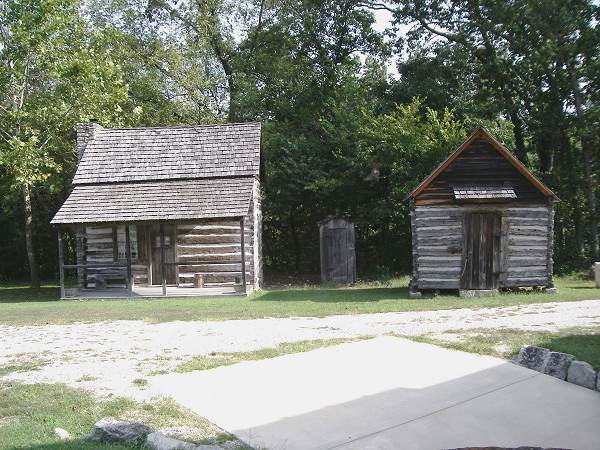
01 Cabins at Museum The history of the cabins has been told several times in various ways on our website. In case you missed those stories refer to these two previous Progress Notes narratives from March 31, 2008 and August 11, 2008.
However, the smaller structure located between the two cabins has been ignored and never discussed before (photo 02).
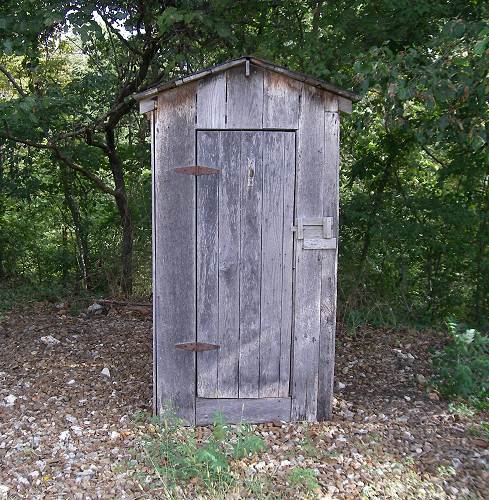
02 Outdoor Toilet Of course, it is called an outdoor privy, outhouse or simply an outdoor toilet. But you may be surprised to know that the two cabins are much older than the outdoor toilet. The reason is that outdoor toilets were not built in any number until the 1930’s. Many older people still alive today remember well that in those days elimination only required a short walk to the woods behind the house.
One reason I know something about the subject is that the outdoor toilet was the reason that I was born here. My Uncle Ansel Pryor (photo 03), who was born and raised in Wright County, three counties south of here, got a job with the Missouri State Health Department of Sanitation in the depression days of the 1930’s.
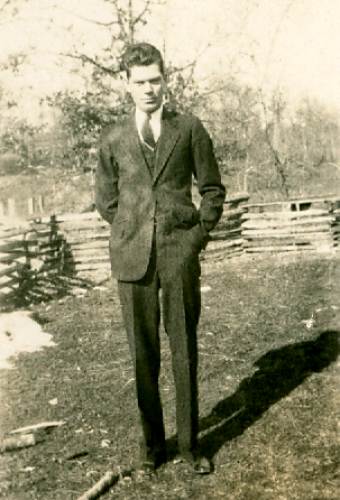
03 Ansel Pryor He was sent to Tuscumbia to work with the Miller County Health Department to inspect the sanitary conditions of restaurants and other public facilities. Due to the increasing popularity of the Lake of the Ozarks, increasing numbers of privately owned public buildings such as restaurants and motels were being constructed. About that same time, the State began to become aware that the problem of worms and parasite infestation of humans in general, especially in rural areas, partly was being caused by inadequate control of human waste products. So in addition to inspecting public facilities Uncle Ansel was given training regarding proper drainage and control of human waste material. He was told to travel throughout the local rural area to convince local residents to give attention to the proper disposal of human waste. Basically, all that amounted to was advising folks to dig a hole in the ground and place a small wooden structure over it giving special attention to insure that all drainage would be directed away from the home.
Here is a diagram of what was being recommended by the state at the time (photo 04):
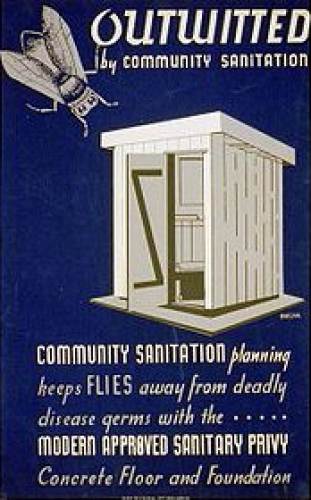
04 WPA Outhouse However, concrete foundations as depicted in the diagram rarely were built for the toilets in the rural areas.
For some reason, the subject of the building of the little outside toilets was intriguing to visiting tourists whom Uncle Ansel would meet whenever he inspected restaurants and other public structures at the Lake. He also noticed that vacationing visitors wanted to buy souvenirs having some theme relevant to our part of the country here. So being a rather enterprising fellow, he came up with the idea of building and selling to the tourists little wooden replicas of the outside toilets he was recommending that local rural people build for themselves.
At this time my father, Harold Pryor (photo 05), Ansel’s brother, was still at home living with his parents down in Wright County. Their farm was drying up and blowing away due to a very severe draught which had been present for several years; times were very tough. So Ansel asked his brother Harold to come up to Tuscumbia to live with him so he could help make the little wooden replica toilets to sell to the tourists.
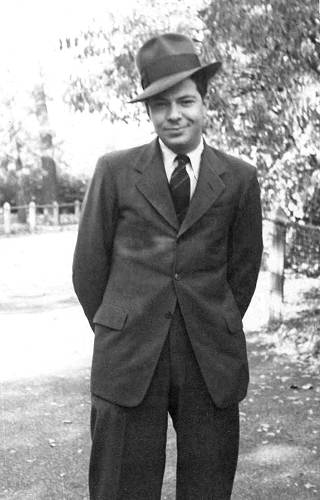
05 Harold Pryor Dewey Kallenbach (photo 06) of Tuscumbia was an excellent wood craftsman who helped Ansel and my father set up the jigs and tools to make the little toilets in quantity.
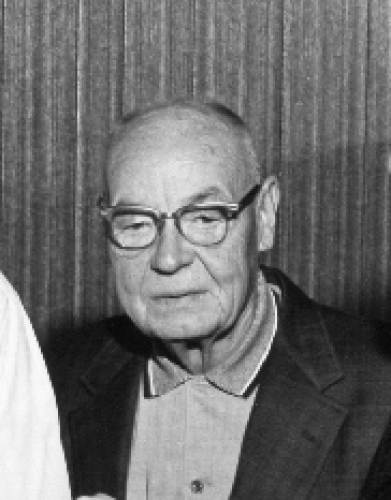
06 Dewey Kallenbach The toilets were made out of sycamore (photo 07).
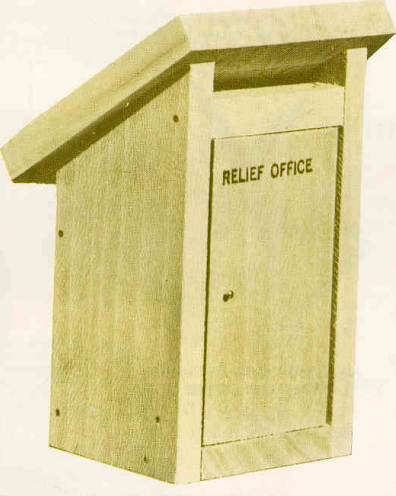
07 Outdoor Toilet Souvenir (Later other types of souvenirs were made but cedar was chosen for them because cedar was more attractive, especially when lacquered.)
The little toilet made of ash was an instant seller in the souvenir shops; tourists for some reason were fascinated by the subject of the outdoor toilets being built in the Ozarks and readily purchased the souvenir toilets to take home as mementos. Ansel and my dad were so busy making the little toilets that they asked their brother, Fred to come and help just as soon as he got out of the Navy (photo 08).
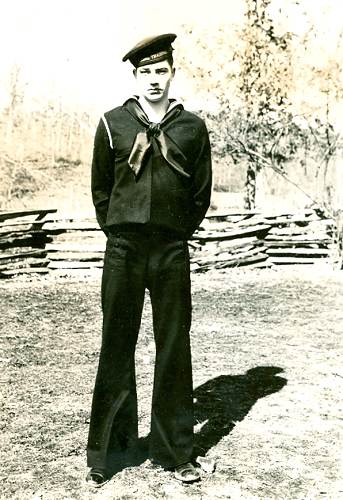
08 Fred Pryor The brothers bought and converted an old stable which belonged to the Pickens’ estate to use as a building for setting up the jigs and tools for making the toilet item as well as other souvenirs as well, most of the rest being made of cedar (photo 09).
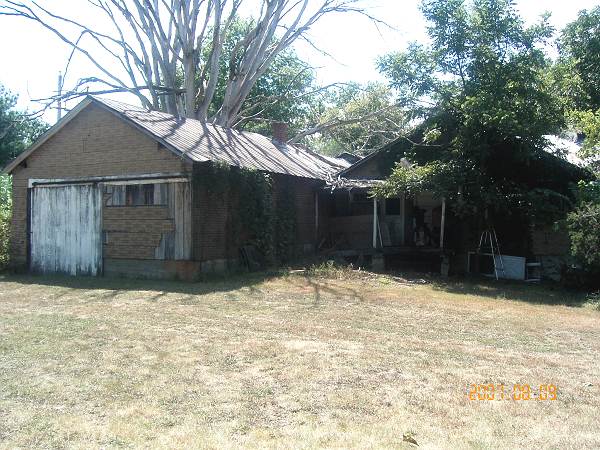
09 Old Converted Stable These were still the depression days of the late 1930’s for most of the country although the Lake area was better off than other areas due to those tourists apparently not so affected by the depression who vacationed and spent money here. However, Miller County didn’t completely escape the effects of the depression so a county office to help those in need was established. It was officially known as the “Relief Office.” Uncle Ansel, who was well aware of the prejudices and myths many of the visitors held about local people decided to make a play on words and that is why he started stamping on the little toilets the words “Relief Office.” They sold even better then! Soon other items made out of cedar wood were made to sell to the tourists. Eventually, enough different cedar novelties were made that a catalogue was printed to showcase the souvenirs available for sale (photo 10).
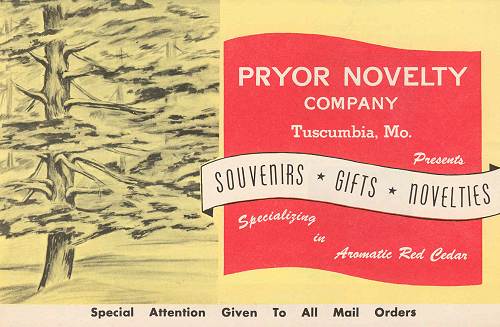
10 Color Catalogue So that is how my father and his two brothers made a living for the rest of their lives here in Tuscumbia. And now you know what I meant when I said the outdoor toilet is the cause of my being born and raised in Tuscumbia!
You can read more about the Pryor Novelty Company at this previous Progress Notes.
You will need to scroll half way down the page to get to the narrative about the Novelty Company.
The history of the outhouse in general is covered in a really fascinating way on Wikipedia.
The outhouse we have at the museum was built by Eugene Keeth of Iberia. He was a good carpenter who gave the museum much of his time for various projects. We were sorry to lose Eugene who passed away several years ago.
Lysha Tompson, who is on the faculty of the Tuscumbia School system as well as serving the local community as Chairperson of the Tuscumbia Town Board, is one of those very actively involved with the recent celebration of the new Tuscumbia bridge opening ceremony. At the celebration in the park she presented a PowerPoint photo collage featuring old photos of the two previous bridges over the Osage River as well as other historical photos. In addition, Diane Berkbigler of our museum provided three very well done pictorial history display boards (photos 11, 12 and 13).
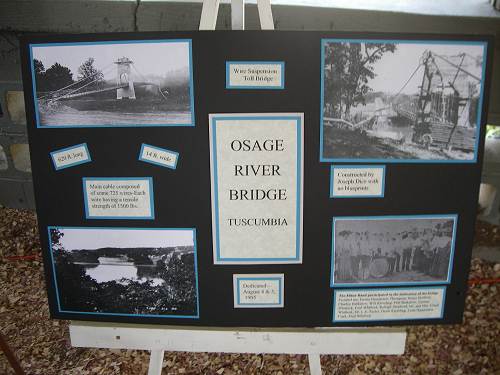
11 1905 Suspension bridge over Osage River at Tuscumbia
Click image for larger view
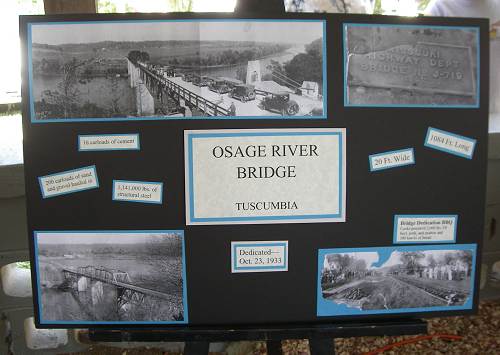
12 1933 Bridge and Celebration at Tuscumbia
Click image for larger view
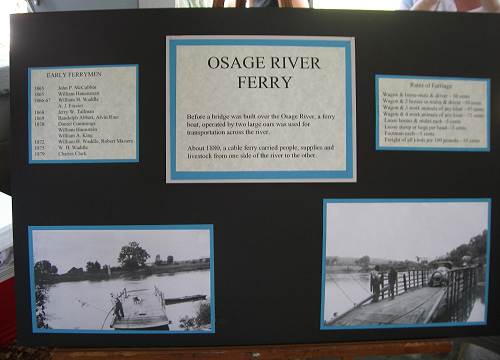
13 Ferrys on the Osage
Click image for larger viewAfter the celebration Lysha took these items to the school and made a very attractive display for the high school lobby (photo 14).
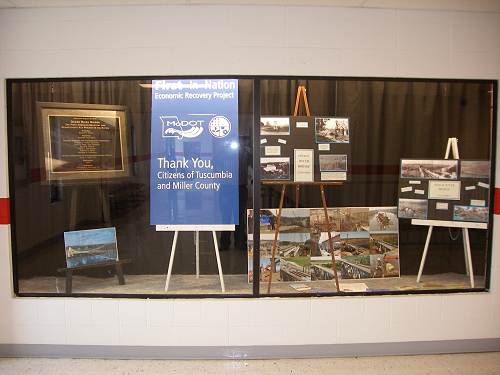
14 Display at School
Click image for larger viewOther items in the display included some original art work by former Tuscumbia native Janet Hix Buthold. Especially noteworthy was Janet’s painting of the old swinging bridge (photo 15).
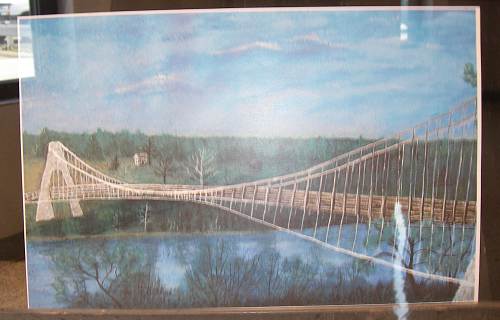
15 Old 1905 Swinging Bridge Painting
Click image for larger viewJanet also loaned us three colored pencil images of the first school in Tuscumbia, the old Anchor Mill building, and another image of the swinging bridge (photo 16).
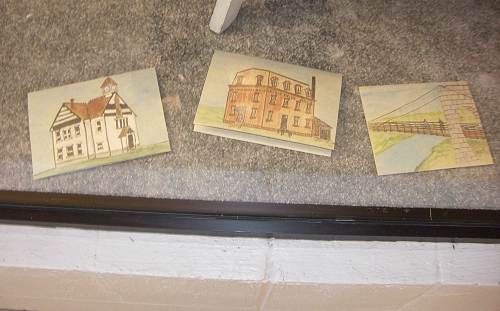
16 School, Mill and Bridge
Click image for larger viewAlso included was the official MoDoT plaque describing the bridge and officials in office at the time it was completed (photo 17), cuttings from the official ribbon which hung across the bridge before the opening ceremony (photo 18), and a collage of photos of the new bridge (photo 19).
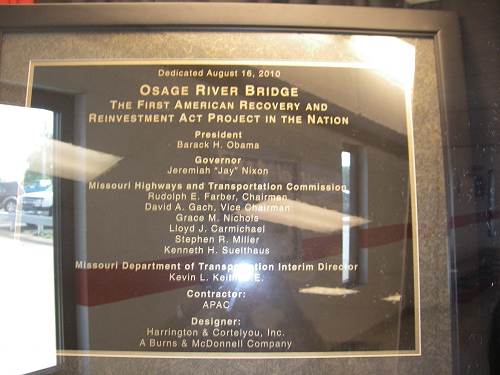
17 MoDoT Official Plaque
Click image for larger view
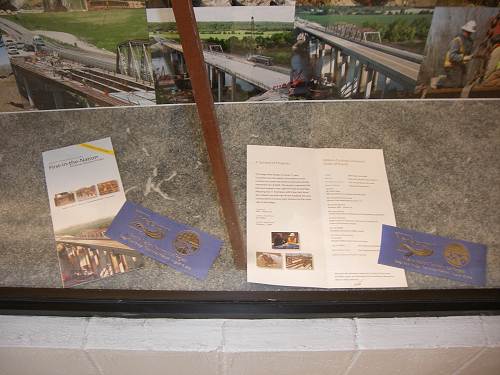
18 Ribbon Cuttings and Brochures
Click image for larger view
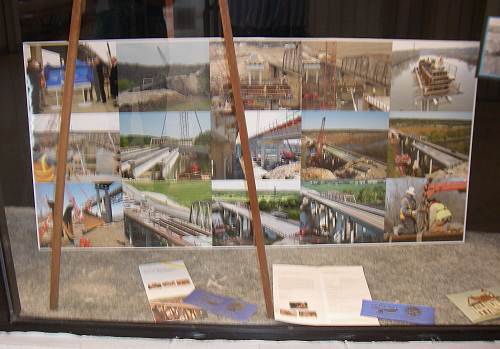
19 Photo Collage
Click image for larger viewBy the time you read this the display will have been moved to its permanent location in our museum.
We are very grateful to Lysha and the school to have produced this very well done pictorial summary of the history of the various means of crossing the Osage River as well as the photos of the bridge opening celebration for the students, faculty and community to enjoy.
I came across an old article in the Autogram which featured the Mount Pleasant school. The year was 1925 and the school was featured because it was the first one in Miller County to be given the rating of First Class Rural School. The article also included at the end a summary of state recommendations of teaching schedules and methods for teachers to follow:
Mt. Pleasant First Approved Rural School in County Under New Law (photo 20)
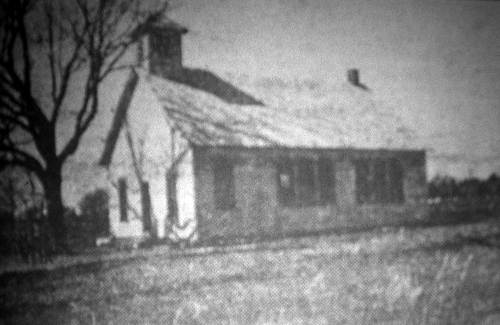
20 Mt. Pleasant School Miller County Autogram
March 19, 1925
Mount Pleasant district, in the northwestern part of Miller County takes the honor for being the first school in the county to meet the requirements of a first class rural school under the new law. Not only does this school meet these requirements, but it stands forth as a model rural school.
This is not the wealthiest rural school in the county but the wealth of the district may not count so much as other features. There has to be co-operation between the teacher, the patrons and the pupils, and in this respect the Mount Pleasant School is not lacking. Mildred Wetzel, the teacher, has the interest of every pupil at heart and is ambitious to make her school the best in the county. Encouraging her in this work is the board of directors composed of M.B. Graham, president; Armand Haynes, clerk; and Ira D. Long and C.M. Haynes, members.
The assessed valuation of the district is $155,000, the levy for school purposes is 65 cents on the $100 valuation and Miss Wetzel is paid $85.00 per month salary.
Miss Wetzel holds a teacher training certificate in a first class district; the teacher has the interest of every pupil at heart and is ambitious to make her school the best in the county. Encouraging her in this work is the board of directors composed of M.B. Graham, president; Armand Haynes, clerk; Ira D. Long and C.M. Haynes members.
Miss Wetzell’s teacher training certificate is equivalent to a first grade, and she has ten hours of college work additional.
The school building, a picture of which is shown above, was built about seven years ago and is kept in good repair. It is equipped with a modern Smith heating system and good light is afforded with windows all on the north side. The interior walls have been painted in harmonizing and pleasing colors, and the windows, walls and blackboards are always decorated in pleasing effect which is sure to catch the visitor’s eye when he enters the building.
County Superintendent Starling says there are several more rural schools in Miller County which could meet the requirements as first class rural schools with the expenditure of a small amount of money, and several others could meet the requirements of second class rural schools.
Among the reasons given why many schools in Miller County could not at present meet the approved rural school requirements, Mr. Starling enumerates the following:
Poor lighting due to small windows, inadequate numbers of windows, and windows on the wrong side of the building; no stove in center of building; unqualified teachers; and inadequate libraries.
In order that more interest may be taken in the rural schools in Miller County, Superintendent Starling requests The Autogram to print the following requirements for First and Second class approved schools. The explanation is copied from the State Course of Study:
Explanations:
The daily program has been so arranged that the number of classes may be diminished and longer periods given to the essentials. You will observe that no regular period is given for spelling and some other subjects as outlined in the Course of Study. You will, however, notice that these subjects are given in the correlation and alternation group and should be given as much time as possible.
In the “D” Reading, time should be taken for regular spelling for five minutes, two times per week.
Thrift and spelling should be alternated and correlated with “A” “B” and “C” arithmetic at least one time and oftener if possible. The number of classes has been diminished and longer periods are to be given for spelling and some other subjects as outlined in the Course of Study. You will, however, notice that these subjects are given in the correlation and alternation group and should be given as much time as possible.
In the “D” Reading, time should be taken for regular spelling for five minutes, two times per week.
Thrift and spelling should be alternated and correlated with “A,” “B” and “C” arithmetic at least one time and oftener if possible. The spelling should for the most part be taken from subjects being studied.
In “A” History and Civics, history should be given five times per week for 15 minute periods and spelling given five times for five minutes. This, in most cases, should be regular spelling. Citizenship should be correlated with the course in history and civics.
The class in “B” History should recite four times. General spelling one time; “C” History should recite three times; a five minute drill on spelling three times and two fifteen minute periods in Geography.
A reading will have three periods and grammar two periods per week.
In the “D” class three periods per week will be devoted to reading and two to spelling. The “B” Language will have three periods per week. Nature Study and Health Education will have two periods with three five minute drills in spelling.
The “C” Language will have three periods per week. Nature Study and Health Education two, with three five minute drills in Spelling.
One ten minute period should be devoted to spelling at least once a week and some time devoted to projects during the ‘A” Geography period.
Art, handwork and writing should be alternated in all classes desired. The “B” Class Reading should have four periods per week with one entire period devoted to spelling.
Health and Physical Education should have four periods with one period in spelling.
The “C” Reading Class should have three periods, the other two being given to spelling.
Four periods in the “B” Class per week will be devoted to Geography and one period to spelling.
The Agriculture Class, composed of 6th, 7th, and 8th grades, will have five periods per week, and with this geography, history, arithmetic, thrift, language, etc., should be correlated.
This program is only suggestive but if worked out and carefully followed will be productive of good results in the rural and elementary schools of the State.
Classification of Rural Schools:
The Rural Schools of Missouri will be divided into First and Second Classes.
After reading this old article it seems to me that perhaps teachers were being micromanaged back then as much as they are now regarding their approach to teaching!
More bridge implosion photos are being circulated; I copied a number of them last week for this page. However, Ginnie Duffield had an unusually good photo I thought which she placed in last week’s Autogram so I thought I would show it for those who may not have seen it (photo 21):
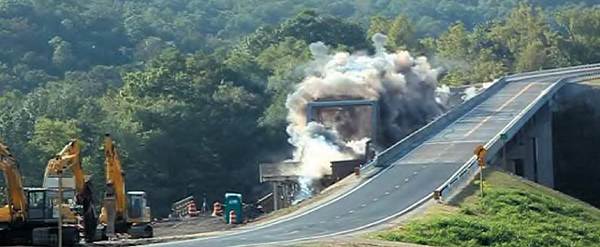
21 Gone Now
Just before 9 a.m. Tuesday, Aug. 31, the center of the old bridge at Tuscumbia was blown up and dropped into the Osage River. This photo was taken from a video of the demolition, which is available on the newspaper’s website. At right is the new bridge, which some area residents are now calling the “Bridge to Everywhere” after it got dubbed “the bridge in the middle of nowhere” or “the bridge to nowhere” by national media pundits shortly after construction started in Feburary 2009 as the first federal stimulus project.
(Photo by Ginny Duffield)
Clyde Lee Jenkins wrote an article for the Autogram describing his research about the early beginnings of the Civil War in Miller County which I found informative so I will include it with this week’s Progress Notes:
1861 Events Led To Civil War In County
Miller County Autogram Sentinel
April 6, 1961
Clyde Lee Jenkins (photo 22)
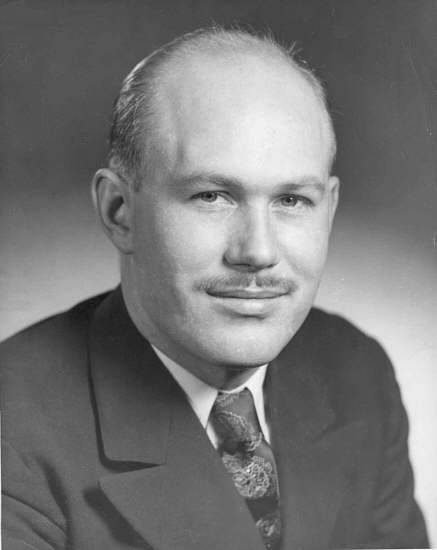
22 Clyde Lee Jenkins Events leading directly to Civil War in Miller County began in January, 1861. There were mass meetings at Tuscumbia, Iberia, Ulman’s Ridge, and Pleasant Mount. At these meetings the citizens of Miller County discussed Governor Jackson’s (photo 23) call for a state constitutional convention.
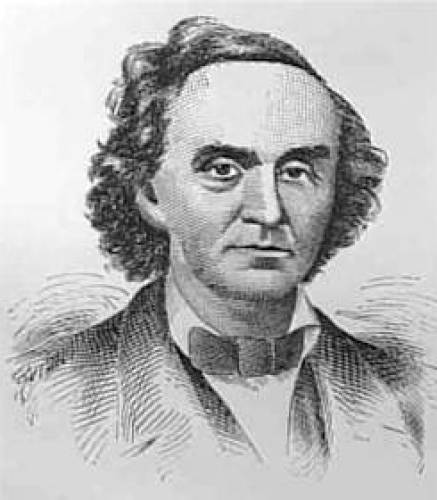
23 Claiborne Fox Jackson Since a question on secession was involved, the election of delegates to the convention was soon a heated subject in the discussion of the inhabitants.
At the election, on February 18, 1861, J.W. McClurg (photo 24), Procter Knott (photo 25), and Thomas Scott (photo 26) of Tuscumbia, strong Union men, were elected as the delegates to the Constitutional Convention from this area.
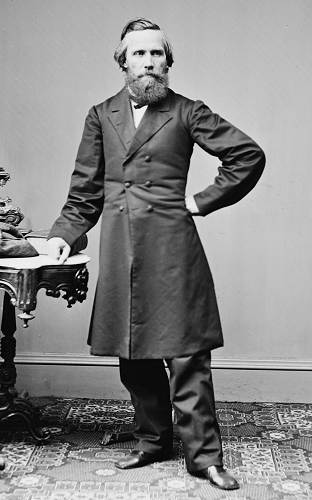
24 Joseph W. McClurg
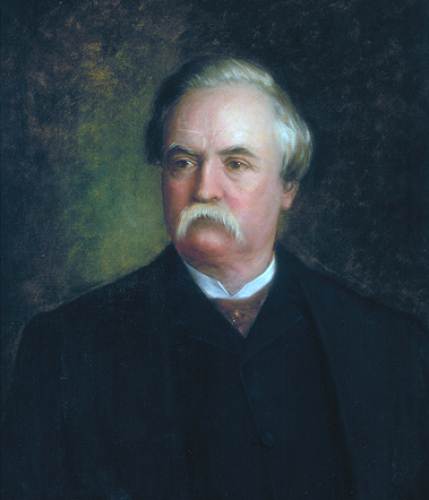
25 Procter Knott
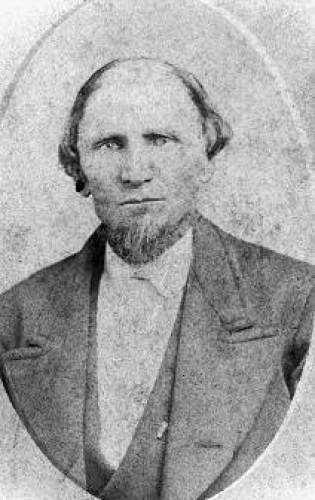
26 Thomas Scott In March, 1861, during court at Tuscumbia, the citizens of Miller County met at the courthouse (photo 27).
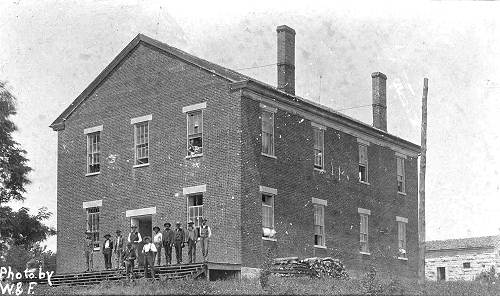
27 Old 1859 CourtHouse
Click image for larger viewThere affairs of the state were vigorously discussed by the inhabitants and others. The Union was defended by Judge Ross, Versailles; Thomas Scott, Tuscumbia; and State Senator Procter Knott.
Attorney Parson (later a Confederate general), Peter Singleton Wilkes (afterward a member of the Confederate congress) and Daniel Etter made strong speeches for secession.
Wilkes declared the President ought to be impeached as he and the Black Republicans wanted war. He denounced Lincoln’s course in language as blunt and pointed as he could command. Wilkes prophesied no army would ever pass over the soil of Miller County for the purpose of coercion of the South. Volunteer companies would defend “ourselves, our homes, and our property.” Miller Countians were of the South, with and for the South; and the Black Republicans were traitors!”
State Senator Miles Vernon of Laclede County, a legislator of 10 years service, first elected in 1850, and a fiery orator, toured Miller territory, beginning at Ulman’s Ridge, and informed the people that the “Dutch” under Captain Lyon (photo 28) would bring robbery, murdering, and despoiling of property upon citizens of Miller County.
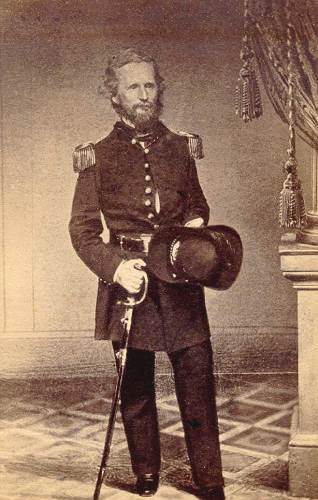
28 Nathaniel Lyon This excited the people, and immediately State Guard companies were formed for the protection of the inhabitants.
Captain William McCubbin, with Lt. John Abbett, formed the first State Guard Company at Ulman’s Ridge, in late March, 1861, followed by Captain Abraham Castleman, with Lts. Jesse W. Burks and William R. Wright, at Iberia. Captain James Johnston formed a company at Tuscumbia in the same month. These State Guard companies favored secession and upheld state’s rights. To these captains, Governor Jackson sent much powder and shot for use and safekeeping when he fled from Jefferson City.
This powder was taken from the magazines where it was stored in the city of St. Louis, and removed to Jefferson City, by Captain Joseph Kelly, in Frost’s Brigade of state troops, who afterward, and until the close of the war, was an officer in the Confederate service. This powder from the magazines in St. Louis was distributed, as far as possible, wherever “Secsh” companies could be found.
On April 13, 1861, Fort Sumpter fell. When the news of this breach in the Union by hostile rebellion reached Miller County, a rebel flag was hoisted on a tree near Atkisson’s store building, under the hill, at Tuscumbia, while at the ferry, a rebel flag fluttered on the left of the landing; the Stars and Stripes on the right.
On April 15, 1861, President Abraham Lincoln issued a call for 75,000 men to suppress rebellion. This call was denounced by Governor Jackson of Missouri, as “illegal, unconstitutional, revolutionary, and diabolical.”
Captain Nathaniel Lyon, United States Army, began the organization of union troops in Missouri, especially enrolling and arming the German citizens in St. Louis, previously formed into military organizations, through the influence and exertions of F.P. Blair, Jr.
On May 10, 1861, Captain Lyon, with five or six thousand of these German troops, and a few Regulars, captured “Camp Jackson,” and the following day, some innocent persons were killed by Lyon’s troops, in firing upon a mob which apparently had first fired upon them, killing a number of soldiers, at the corner of Fifth and Walnut, St. Louis.
Missourians were enraged by these actions of Lyon and his German troops. Four days after the Camp Jackson affair, Captain Lyon was removed from command, and replaced by General Harney, United States Army. On May 21, 1861, General Harney entered into a peace arrangement with General Sterling Price, in which it was agreed order would be maintained and the peace preserved in Missouri by Price’s State Guards.
Now, Union men were angry. This celebrated peace arrangement had over reached the authority of the federal government. They protested to Washington, and nine days later, Captain Lyon was again in command of the St. Louis Arsenal and Union troops there.
A week later, Captain Lyon was asked by Governor Jackson and General Sterling Price for an interview, leading to their meeting at Planter’s House, St. Louis, on June 11, 1861, and the beginning of hostilities.
The impact of these activities in the state and nation in the spring months of 1861, created the most intense excitement throughout Miller County.
Since the State Guard companies in Miller County were “Secesh,” persons upholding the Union were told “either join up or leave the county.”
At Iberia, the “Secesh” State Guard Company threatened, in certain inflammatory speeches and statements, “to hang or shoot the Eastern people or Pennsylvanians, in Richwoods township, loyal to the Union.” The Pennsylvanians were informed by the officers of this company to come out and immediately sign the company’s Articles of Confederation, and the Oath of Allegiance to the Southern Confederacy subscribed to, or else.”
When the Pennsylvanians refused to do this, a select committee, appointed by the company, waited upon the loyal families, one at a time. Even then, many of the Pennsylvanians still repudiated the Oath of Allegiance to the Confederacy. They were immediately advised, by officers and members of the company, they had “better be getting away form Miller County.”
A number of these loyal families did leave the township; others left the county; some remained away from home in hiding, while a few joined with the company in the Southern cause.
The “Secesh” State Guard Company at Tuscumbia, Captain James Johnson, commanding, informed officials at the courthouse that the government of Miller County was a part of the Confederate States of America.
While preparations were being made to defend Miller County against Lyon’s “Dutch” troops, Captain William McCubbin, commanding the State Guard Company at Ulman’s Ridge, informed the citizens of Glaze Township to support the Southern cause or leave the county. Theodore B. Robinson, W.H. Payne, and William Hawkins were among those persons told “to either get in or get out.”
This was too much! The loyal citizens of Glaze Township were now fully aware of the necessity of defending themselves against the acts of those who had long ago determined Miller County was a part of the Southern Confederacy.
In May, Theodore B. Robinson (photo 29), W.H. Payne, and William Hawkins (photo 30) issued a call for a mass meeting to be held approximately one half mile east of present day Brumley, below the Union Church house.
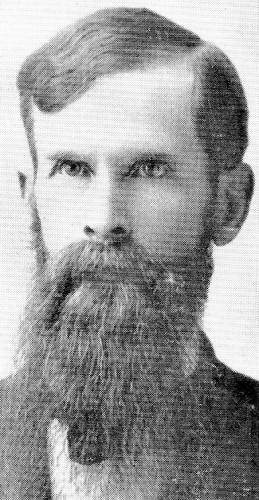
29 Theodore B. Robinson
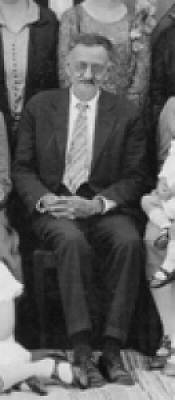
30 William Hawkins There, on the appointed day, before a tremendous crowd, J.W. McClurg, William Hawkins, Theodore B. Robinson, and others, made rousing speeches for Union organization. The womenfolk of the families of Hawkins and Robinson had torn into strips old dresses of proper color, and of the cloth, made a National Flag, the first Stars and Stripes ever seen by many persons in Glaze Township.
On May 22, 1861, “Union” Home Guard companies D, E, K, and G were organized. The aggregate strength of these companies was 95, 94, 76, and 95 men, respectively. These companies established Camp Union, on Mill creek, below the Union Church house; and for field officers, elected Emly Golden, colonel; John K. Hass, major. In the same week, Home Guard companies upholding the Union were organized north of the river at Pleasant Mount and Fair Play. The aggregate strength of these companies was 102 and 114 men, respectively.
Captain Daniel Rice organized the Miller County cavalry on the north side of the county, and Captain John Salsman organized the Miller County Rangers on the south side.
By the middle of June, 1861, many members of the State Guard companies in sympathy with the South, had left Miller County for Southwest Missouri to fall in with the forces of Governor Jackson. Captain James Johnston had taken most of his company into the Fifteenth Missouri Cavalry, Parsons’ Division, under General Sterling Price (photo 31).
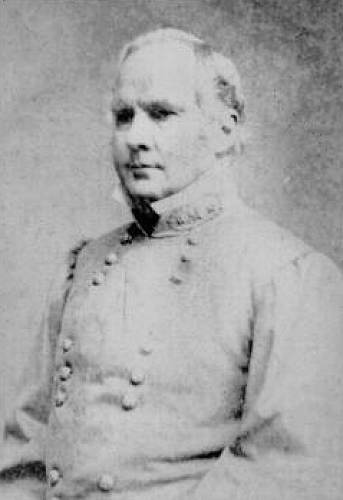
31 General Sterling Price Perhaps this was a fatal move for the Secession cause in Miller County Companies favoring the Union, armed with knives, pitchforks, muzzle loading rifles, shotguns, pistols, and rocks proceeded to round up Governor Jackson’s powder and shot that had been secreted in Miller County.
Colonel Emly Golden’s forces scoured the south side of the county and found Claiborn Jackson’s powder in houses, barns, cellars, and caves. Captain Jacob Capps’ forces and Captain Daniel Rice’s Miller County Cavalry secured the north side of the county. Then Golden and Capps moved upon the Miller County courthouse.
E.B. Farley, the county clerk, who favored secession, had secretly stored a tremendous quantity of the governor’s powder in the courthouse at Tuscumbia. In a minor skirmish, in which no one was killed, the courthouse was taken by loyal troops, and the powder removed from the building. A small iron cannon was also obtained, afterward planted at Camp Union where, when fired, its great “boom” bolstered the morale of troops, but terrified the inhabitants in Glaze township.
Thanks Clayton.
Again this week I will continue with another installment from the book, Ozark Superstitions written by Vance Randolph (photo 32).
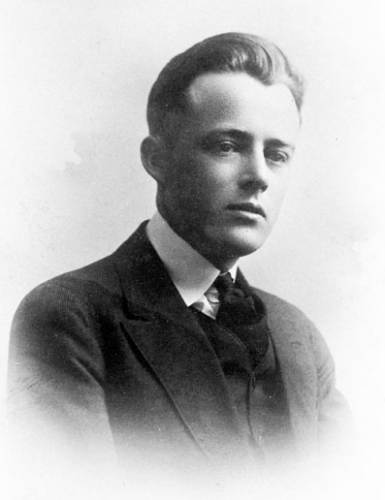
32 Vance Randolph This week Mr. Randolph writes about folk traditions concerning crops and livestock (photo 33).

33 Ozark Superstitions - Crops and Livestock
Click image to read entire chapter in the PDF format
We were saddened a couple of weeks ago to learn of the death of Jean Keeth of Iberia. She and her husband, G.R. Keeth, have been supporters of the Miller County Historical Society for many years. Jean was an avid quilt maker; she won the First Prize in our quilt contest a couple of years ago at the museum. Jean also is an expert cook and recently before her illness completed a book of her recipes accompanied by beautiful photographs. Her son, Greg Keeth, is one of our Miller County Historical Society board members. The Keeth family made a very generous donation to our Historical Society to help cover our expenses for the recent Bridge Opening ceremony and Celebration at Tuscumbia. We wish to extend our condolences to the family and friends of the Keeth family and let them know how much we will miss Jean’s presence at our meetings and events. The following two photos offer more information about Jean’s life and accomplishments (photos 34 and 35).
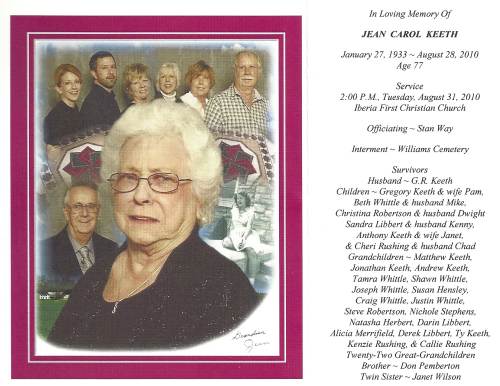
34 Jean Pemberton Keeth Memorial
Click image for larger view
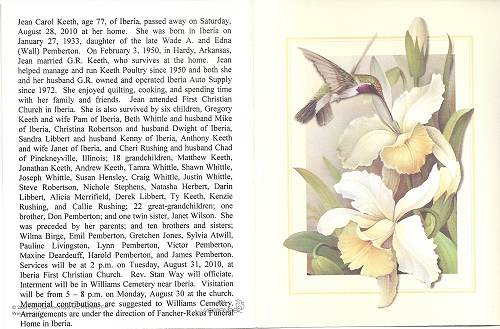
35 Jean Pemberton Keeth Memorial
Click image for larger viewThat’s all for this week.
 Joe Pryor
Previous article links are in a dropdown menu at the top of all of the pages.
|

